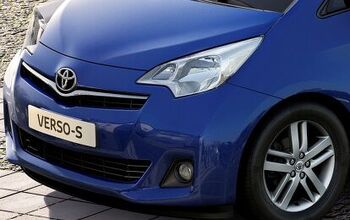What's Wrong With This Picture: The High Cost Of High Fuel Economy Edition
As the industry (or at least parts of it) and the federal government face off over forthcoming 2017-2025 CAFE/emissions standards, a Center for Automotive Research study is getting more play than ever from an industry that seeks to portray the high cost of fuel economy improvements as being not worth the additional costs to consumers. CAR has yet to publish its full study, but it’s clearly intended to counter an offensive from groups like the Consumer Federation of America, which uses its own study to show that CAFE regulation will actually save consumers money. This battle, over the cost to industry and consumers of passing a 62 MPG standard for 2025, has been playing out for months now, and will continue to go back and forth over the rest of this summer. And sure enough, the Union of Concerned Scientists and the National Resources Defense Council have both hit back against the CAR study, calling it “industry-advocate propaganda” in the Detroit News and arguing that it underestimates future reductions in technology costs.
Meanwhile, another report from the University of Michigan’s Transportation Research Institute shows that CAFE increases could yield big dividends to Detroit (although we have our doubts about that one). The point is that the 2017-2025 emissions standard seems to be turning into something of a Rorschach Test, as there’s research out there showing nearly every possible outcome, good and bad, coming from a standards hike ( here is one way the government estimates cost increases). We encourage anyone who is interested to avail themselves of the data and make a case one way or the other in our comments section. Ultimately though, since California’s Air Resoures Board is leading the federal government on this issue anyway, expect CAR’s research to be ignored (or used to create some kind of “CAFE compensation”) as a 62 MPG 2025 standard is likely too far along to stop at this point.
More by Edward Niedermeyer
Latest Car Reviews
Read moreLatest Product Reviews
Read moreRecent Comments
- ToolGuy The other day I attempted to check the engine oil in one of my old embarrassing vehicles and I guess the red shop towel I used wasn't genuine Snap-on (lots of counterfeits floating around) plus my driveway isn't completely level and long story short, the engine seized 3 minutes later.No more used cars for me, and nothing but dealer service from here on in (the journalists were right).
- Doughboy Wow, Merc knocks it out of the park with their naming convention… again. /s
- Doughboy I’ve seen car bras before, but never car beards. ZZ Top would be proud.
- Bkojote Allright, actual person who knows trucks here, the article gets it a bit wrong.First off, the Maverick is not at all comparable to a Tacoma just because they're both Hybrids. Or lemme be blunt, the butch-est non-hybrid Maverick Tremor is suitable for 2/10 difficulty trails, a Trailhunter is for about 5/10 or maybe 6/10, just about the upper end of any stock vehicle you're buying from the factory. Aside from a Sasquatch Bronco or Rubicon Jeep Wrangler you're looking at something you're towing back if you want more capability (or perhaps something you /wish/ you were towing back.)Now, where the real world difference should play out is on the trail, where a lot of low speed crawling usually saps efficiency, especially when loaded to the gills. Real world MPG from a 4Runner is about 12-13mpg, So if this loaded-with-overlander-catalog Trailhunter is still pulling in the 20's - or even 18-19, that's a massive improvement.
- Lou_BC "That’s expensive for a midsize pickup" All of the "offroad" midsize trucks fall in that 65k USD range. The ZR2 is probably the cheapest ( without Bison option).

































Comments
Join the conversation
Look at it this way, Why do Europeans drive smaller cars with smaller motors? To get the most of their fuel economy since gas is around $6 dollars a gallon if not more already. Hens the preference for A/B/C segment cars that get the equivalent to 38-45mpg highway and 30-32 city at the very least. I'm looking at getting a small car that does around that myself and I live in the US and yes, I DO take the bus to work but use my car for pretty much everything else when I don't have to drive into work and I have a bus pass FROM work to compensate for the bus fare.
When has the "Center for Automotive Research" ever gotten anything right? They are nothing but a special interest lobbying group which will spin things to support their position.